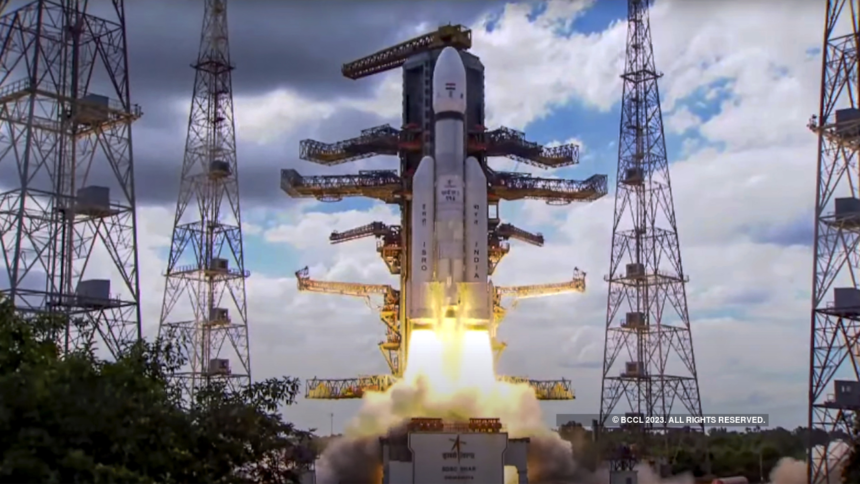India’s third moon mission, Chandrayaan 3, is set to undertake the technically challenging task of a soft landing on the lunar surface on August 23, according to ISRO Chairman S Somanath. The successful launch of the estimated Rs 600 crore mission took place recently, and the craft’s infusion into the lunar orbit is scheduled for August 1. The anticipated soft landing is planned for 5:47 pm on August 23, more than a month after Chandrayaan 3 embarked on its journey from the spaceport, piggybacking on the heavylift LVM3-M4 rocket.
Chandrayaan 3 represents India’s ongoing efforts to explore the Moon and expand its space exploration capabilities. Following the success of Chandrayaan 1, which orbited the Moon in 2008, and Chandrayaan 2, which included a landing attempt in 2019, the Indian Space Research Organisation (ISRO) is once again venturing into lunar exploration.
The mission’s primary objective is to achieve a soft landing on the lunar surface. This challenging feat involves ensuring that the spacecraft makes a controlled descent and lands gently, without any damage to the vehicle or its scientific instruments. Soft landings are particularly demanding due to the need for precise navigation and velocity control. Many previous attempts by various countries to achieve soft landings have encountered difficulties, underscoring the complexity of the task.
Chandrayaan 3, equipped with advanced instruments and technology, aims to gather valuable data and expand our understanding of the Moon’s geology, composition, and other scientific aspects. The mission will carry several scientific payloads, including cameras, spectrometers, and other instruments, to study the lunar surface in detail. By analyzing the Moon’s composition, scientists hope to gain insights into its formation and evolution, as well as its potential for resources that could support future human missions.
The successful completion of Chandrayaan 3’s soft landing would mark a significant milestone for India’s space program. It would demonstrate the country’s technological prowess and contribute to its growing reputation in the global space community. Moreover, it would pave the way for future lunar missions, including the possibility of manned missions to the Moon.
ISRO has been making steady progress in space exploration and satellite technology. The organization has successfully launched numerous satellites for various purposes, such as communication, remote sensing, and scientific research. Chandrayaan 2, despite not achieving a soft landing, was a notable achievement as it successfully inserted an orbiter around the Moon and conducted extensive observations and experiments.
The upcoming Chandrayaan 3 mission represents a continuation of India’s commitment to space exploration and its aspirations to further unlock the mysteries of the Moon. The meticulous planning and preparation by ISRO’s dedicated team of scientists and engineers instill confidence in the mission’s success. As the launch date approaches, the anticipation among scientists and space enthusiasts grows, eager to witness another significant milestone in India’s space journey.
India’s Chandrayaan 3 is set to undertake the challenging task of a soft landing on the lunar surface on August 23. The mission aims to gather valuable scientific data and expand our understanding of the Moon. A successful soft landing would be a remarkable achievement for India’s space program, showcasing its technological capabilities and contributing to future lunar exploration endeavors.









